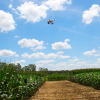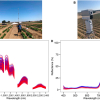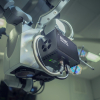
Alzheimer’s disease is associated with areas of high protein concentration in brain tissue: plaques and tangles. Raman imaging is now being used to get sharp images of these affected areas. It is an attractive technique because it shows more than the specific proteins involved. The presence of water and lipids, influenced by protein presence, can also be detected. Using this technique, the researchers at the University of Twente in The Netherlands have studied brain tissue of four brain donors, three of them with Alzheimer’s disease.
After image processing, an area can be seen that is in transition between healthy and affected tissue: this may give an indication how the disease is spreading in the brain. Even in the brain tissue of a healthy person, a small area is detected with protein activity. This can be a first sign of a neurodegenerative disease.
In each of the four brain samples, 4096 spectra were examined. In this case, Raman was used to examine brain tissue outside the body, but it could even be used in vivo for detecting specific areas during surgery. Compared to MRI, PET and CT imaging, Raman is able to detect areas, smaller than cells, with very high precision. In this way, it can be a very valuable extra technique. The Raman images now show protein activity at neural cell level, but the sensitivity is high enough for detecting areas that are even smaller—as is the case with the brain sample of the healthy person.
This work has been published in Scientific Reports.













